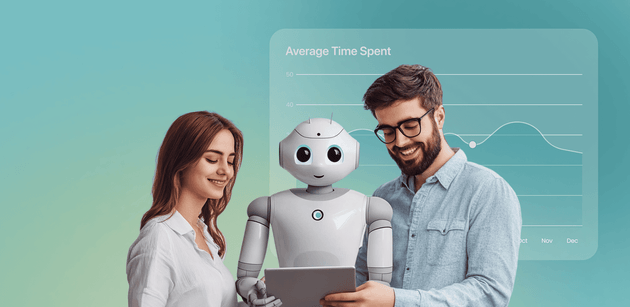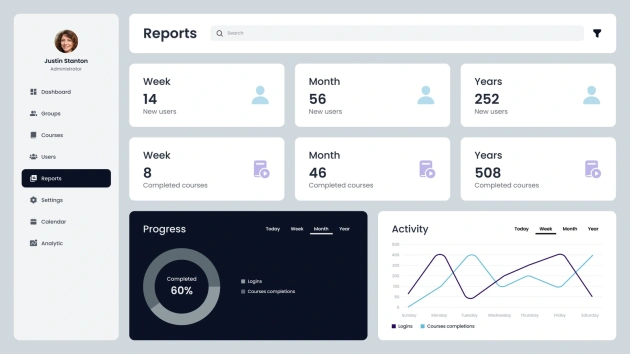Since technological advances and changing job profiles are the new norm, continuing education is key to ensuring company success.
And that’s just what L&D is responsible for. In general, the L&D sector covers two main areas:
- Knowledge management and skills development
- Digital learning and technology-supported knowledge
With the introduction of AI-powered technologies, the need for solid foundational training also increases. New developments are not only impacting the L&D landscape but also the way companies recruit, develop, and profitably deploy talent within their organizations.
Below, we take a detailed look at the 5 trends that dominate the L&D landscape in 2025.
1. AI is stepping up corporate training
Practical, real-life AI solutions are everywhere.
The question is no longer “When?” but “How?” Today, companies are using smart tools to make employees more innovative, personalize service experiences, and drive new efficiencies.
For instance, machine learning and data analytics utilized on the learning platforms can recognize individual needs and dynamically adapt learning content.
And that’s exactly what business leaders expect from AI – a reliable copilot that eases their workload.
AI-native startups, academics, economists, scientists, and thought leaders took part in a recent Microsoft study surveying 31,000 workers across 31 countries. Here are some insights.
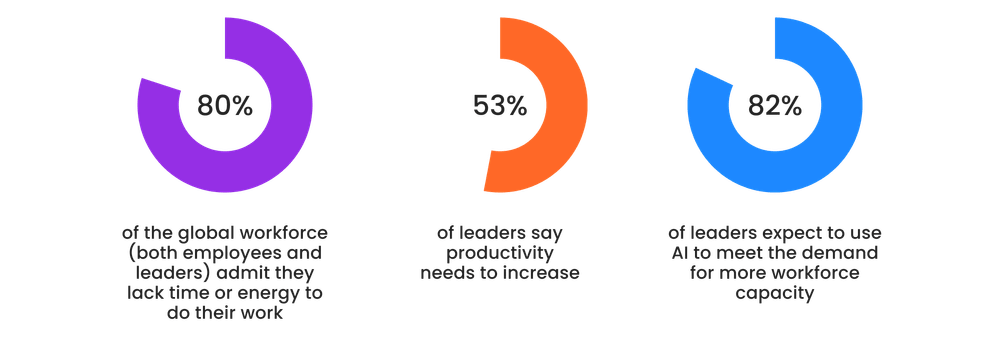
The data highlights a clear workforce challenge: most employees and leaders struggle with time and energy constraints. Overall, the majority of IT and HR leaders (83%, according to Zendesk’s EX Trends) agree that AI tools provide employees with data-driven insights for better decisions.
In particular, employees can interact with AI as assistants that handle repetitive tasks, as digital colleagues that perform specific jobs under human direction, and as overseers who guide AI agents managing entire workflows while stepping in when needed.
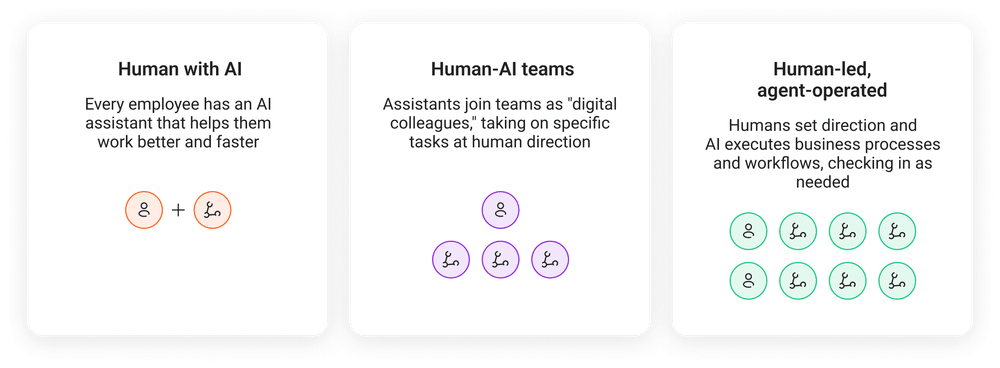
AI tools help analyze the strengths and weaknesses of individual employees and adapt educational content accordingly. According to Microsoft’s study mentioned above, AI skilling and digital labor are top strategies that can be acquired by L&D departments.
When asked about the role of AI and agents in HR and talent management, companies plan to implement the following strategies over the next 12–18 months:
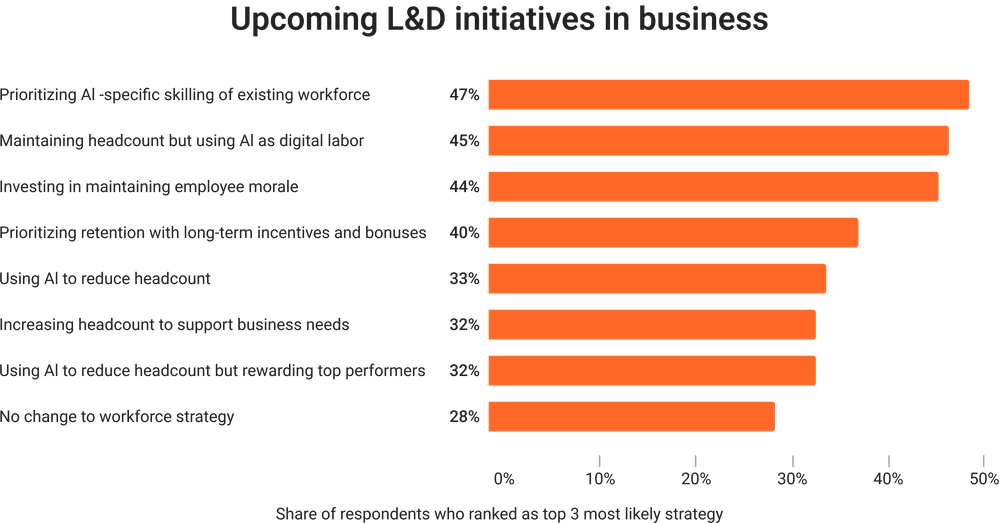
As can be seen from the priorities for the coming months, companies view AI primarily as a tool for improving efficiency and reducing costs – often through task automation or the replacement of certain roles.
However, without additional strategies such as AI training, morale support, or retention measures, companies may risk losing employee motivation, valuable talent, or facing resistance to change.
Microlearning and just-in-time learning
According to Ebbinghaus’ forgetting curve, we forget nearly half of new information within 20 minutes – and up to 75% within a month if it’s not reinforced.
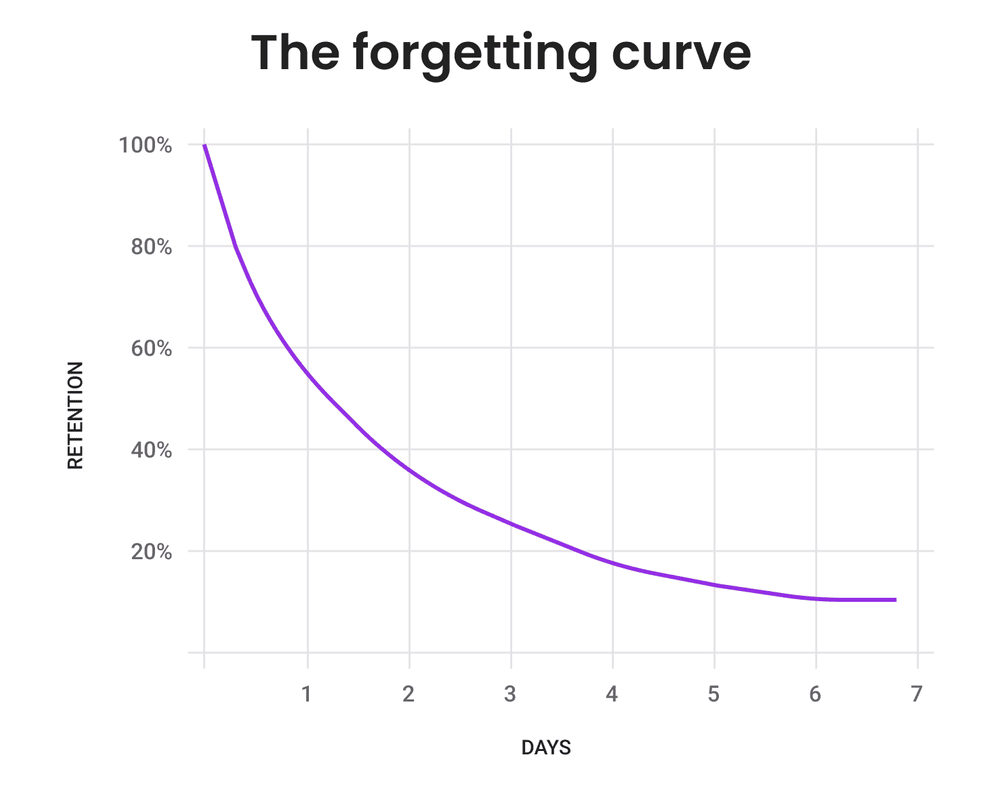
Therefore, it is likely that microlearning will be the dominant format for knowledge transfer in companies. It relies on compact units of knowledge that gradually fit together to form a larger whole. Why is microlearning popular?
- The content provided is bite-sized and focused
Microlearning uses short, concentrated units that prevent cognitive overload. This makes learning easier to consume, retain, and revisit as needed.
- Interactive and engaging formats
Incorporates videos, gamification, and quizzes to boost learner engagement. Active participation improves comprehension and motivation.
- Personalized and just-in-time delivery
Content can be tailored to individual roles, preferences, and learning styles – all with the help of the cutting-edge AI solutions. Learners access information when and how they need it.
Also, microlearning can be easily integrated into everyday work. Here is an example of how it can be done:

Each step describes the following stages of interaction between the student and the teacher, whether it is a human teacher or an AI tutor:
- Teach (6 min) – Deliver a focused, bite-sized lesson on a specific skill or topic.
- Feedback (6 min) – Provide quick, personalized feedback to reinforce learning and clarify misunderstandings.
- Re-plan (12 min) – Review results and adjust the learning plan based on feedback and learner progress.
- Re-teach (6 min) – Deliver a follow-up lesson targeting gaps or difficult areas identified earlier.
- Re-feedback (6 min) – Give additional feedback to confirm improvements and encourage mastery.
Using this scheme, you can roughly estimate the time it will take to learn and consolidate the material in small chunks.
To boost this process, companies should introduce:
- Mobile learning platforms that allow employees to access learning materials anytime, anywhere;
- Educational content in a mix of videos, quizzes, and interactive elements to make the learning process engaging and effective.
Just-in-time learning, for example, is particularly useful for support or technical teams that need quick solutions to problems. Microlearning units integrated directly into work processes are more likely to be perceived as part of everyday work rather than an additional burden.
3. Automation at all levels
One way to address the skilled labor shortage is through automation – a trend confirmed by the Future of Jobs Report 2025.
Among companies facing shrinking labor pools, 60% prioritize retraining, viewing employee development as equally important. Further training is the most common strategy for retention, yet 88% still struggle to retain staff long term.
This matters more than ever because when employees leave, their skills go with them.
Business performance is also directly linked to the level of automation. A study featured in the GRID 2025 Industry Trends Report includes insights from 1,500 recruitment industry professionals across various sectors.
Top-performing companies were 57% more likely to be in advanced stages of digital transformation, with automation playing a key role. Firms automating tasks like candidate search or screening were twice as likely to see 10 %+ revenue growth.
Those focused on boosting recruiter productivity through tech were also nearly twice as likely to achieve the highest growth.
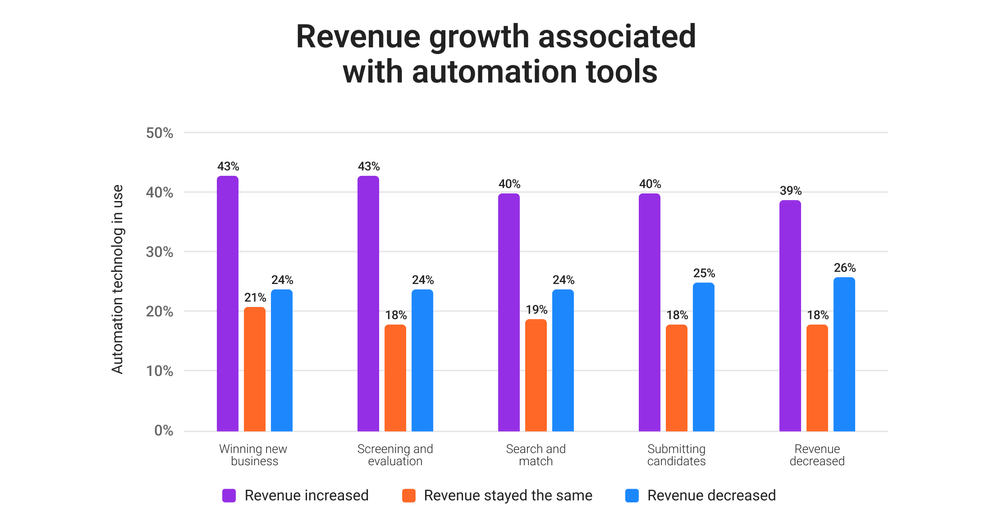
Case studies from our clients in various industries confirm these findings in practice. Just to name a few:
4. Flexibility and customization
“That’s the way we’ve always done it” no longer works for today’s employees. They’re used to constant change – they’ve seen how everything can shift overnight. To keep up, they expect tools that are just as flexible and adaptable as they are.
However, many leaders still struggle to provide true workplace flexibility, citing challenges such as:
- Measuring productivity;
- Maintaining a strong team culture;
- Having tools that support both.
Therefore, strategic company management needs both an external perspective and internal innovation to unlock creative potential. Businesses have to stay flexible and adjust their traditional L&D approaches as market and customer needs evolve.
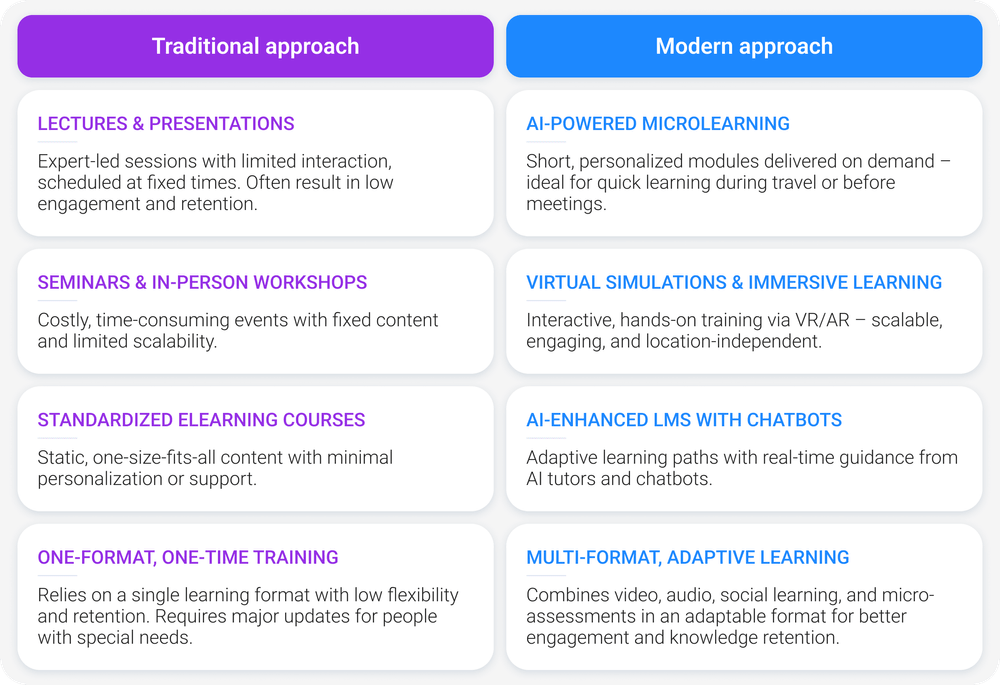
The days when employees knew their IT team personally are long gone. With many workers now hired and trained remotely, IT departments must be more flexible and agile than ever.
Thus, flexibility in the L&D sphere remains a priority: 77% of EX Trends respondents said their companies have strategic plans to implement flexible work models and decision-making processes.
This preference for remote work further fuels the demand for flexible learning and development, enabling employees to access training anytime, anywhere, and at their own pace.
5. Trust in training as a sustainable investment
Gallup estimates that one in two employees is considering a job change. Is it a significant problem for businesses?
Recently, we’ve discussed the price of retaining an employee in a dedicated article – check it out to discover a turnover cost calculation formula, mitigation tips, and more.
Companies that invest in the further training of their employees can not only address the shortage of skilled workers and increase their innovative power and competitiveness, but can also enhance employee retention and team commitment. So, why is this trust expected to sustainably grow in 2025?
- Companies with inclusive and supportive training practices see higher engagement and retention – a proven cost-saving strategy in an era where replacing one employee can cost $50,000+ per year.
- Training is a strategic investment, not a cost. With advanced learning analytics, companies can integrate data from LMSs, surveys, and assessments to track learning progress and optimize programs. Centralized dashboards help visualize success metrics – like completion rates or skill growth – making it easier to demonstrate clear ROI to stakeholders.
Conclusion
The five trends listed above are not just responses to current challenges on the job market, but are actively creating a new paradigm in which continuous employee training and business results are inextricably linked.
As businesses strive to meet the demands of modern education, the right tools make all the difference. Aristek’s cutting-edge solutions, from AI-powered LMS to seamless AI integration and accessibility tools, enable educators to effectively leverage these trends.
Book a free consultation to share your goals and challenges. Let’s talk about how we can support your training programs, improve team performance, and help your business move forward.

